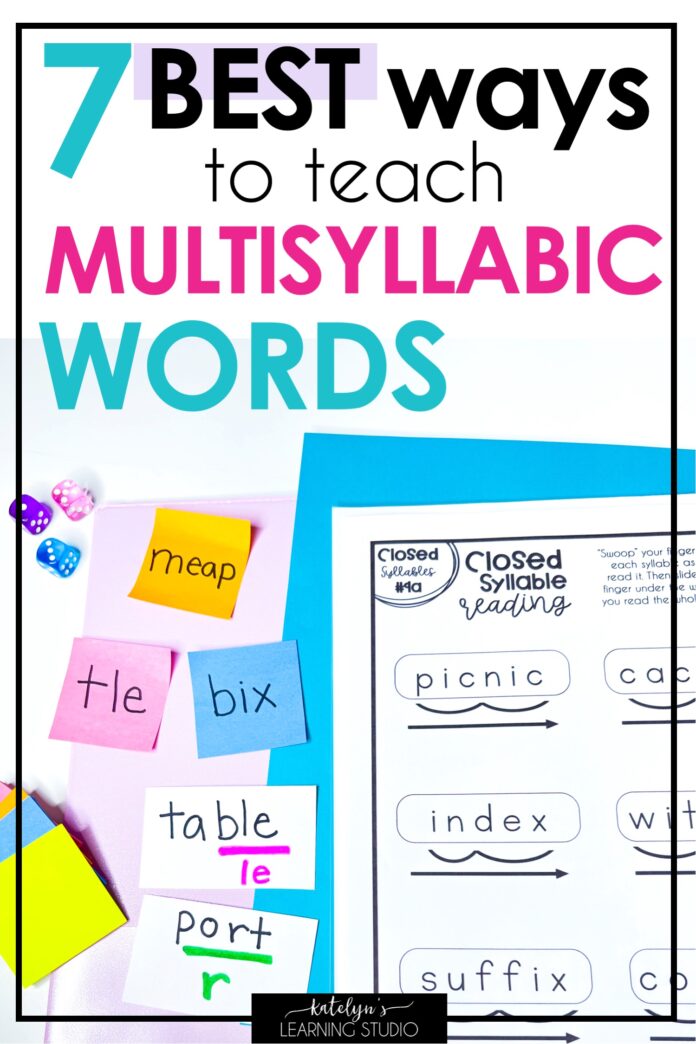
The Power of Chunking: Techniques for Teaching Multisyllabic Words
Teaching multisyllabic words can be a daunting task for educators, as the English language is filled with words that contain multiple syllables. However, there are effective techniques that can be used to help students break down and decode these complex words. One of the most powerful strategies for teaching multisyllabic words is chunking. Chunking is the process of breaking a word into smaller, more manageable parts. By breaking the word into smaller chunks, students can more easily decode and understand the word.
In this article, we will explore the power of chunking and provide techniques for teaching multisyllabic words using this approach.
The Power of Chunking
Chunking is a powerful tool for teaching multisyllabic words because it allows students to break down complex words into smaller, more manageable parts. By breaking the word into smaller chunks, students can more easily decode and understand the word. This approach is particularly effective for struggling readers who may have difficulty decoding longer words.
By breaking the word into smaller chunks, students can focus on decoding each part before putting the word back together. This helps them build confidence and accuracy in decoding multisyllabic words. Chunking also helps students recognize common prefixes, suffixes, and root words, which can further enhance their ability to decode and understand complex words.
Techniques for Teaching Multisyllabic Words
There are several techniques that educators can use to teach multisyllabic words using the chunking approach. These techniques are effective for students of all ages and can be adapted to meet individual learning needs.
1. Syllable Division
One technique for teaching multisyllabic words is syllable division. This involves breaking the word into its syllables and teaching students to decode each syllable individually. By focusing on each syllable, students can more easily decode and understand the word. This technique is particularly effective for teaching students to recognize common syllable patterns and understand the relationship between syllables and word meaning.
2. Visualization
Another technique for teaching multisyllabic words is visualization. This involves using visual aids, such as word cards or pictures, to help students visualize the word and its individual parts. By visually representing the word, students can more easily identify and decode each part of the word. This technique is particularly effective for visual learners who may struggle with decoding multisyllabic words through traditional methods.
3. Word Chaining
Word chaining is a technique that involves breaking the word into smaller parts and chaining them together to form the complete word. This technique helps students recognize common prefixes, suffixes, and root words, as well as understand how these parts come together to form a complete word. By chaining the parts together, students can more easily decode and understand the word.
4. Chunking Sentences
One effective technique for teaching multisyllabic words is chunking sentences. This involves breaking down a sentence into smaller chunks and highlighting the multisyllabic words within the sentence. By focusing on the multisyllabic words within the context of a sentence, students can more easily decode and understand the words. This technique helps students recognize the meaning of multisyllabic words within the context of a sentence and develop greater comprehension skills.
5. Word Mapping
Word mapping is a technique that involves visually representing a word and its individual parts using a graphic organizer. By creating a word map, students can visually represent the word and its individual parts, such as prefixes, suffixes, and root words. This technique helps students recognize the relationship between the word’s individual parts and understand how they come together to form a complete word.
In conclusion, teaching multisyllabic words can be challenging, but the chunking approach offers an effective strategy for breaking down complex words into smaller, more manageable parts. By using techniques such as syllable division, visualization, word chaining, chunking sentences, and word mapping, educators can help students develop the skills they need to decode and understand multisyllabic words. These techniques are effective for students of all ages and can be adapted to meet individual learning needs. By using the power of chunking, educators can help students build confidence and accuracy in decoding multisyllabic words, leading to greater success in reading and language skills.


















